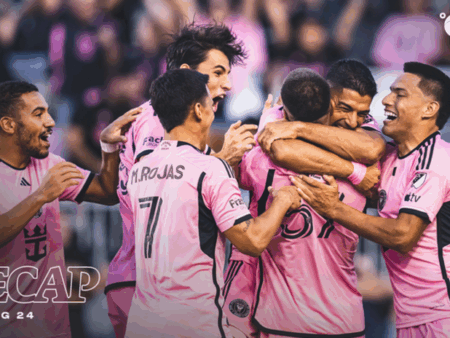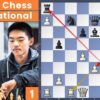The puck drops, the season begins, and for fantasy hockey managers, so does the annual ritual of hope, despair, and, invariably, premature panic. A few games into the schedule, and suddenly the carefully constructed roster assembled with weeks of meticulous research feels like a house of cards. A star player posts two points in four games, and whispers of “bust” turn into shouts for “trade!” This emotional volatility, while detrimental to the faint of heart, presents a golden opportunity for the discerning manager.
This isn`t about emotional reactions or anecdotal evidence. This is about strategy. This guide aims to cut through the noise, offering a dispassionate, data-driven framework for navigating the tumultuous early weeks of the fantasy hockey season, transforming other managers` overreactions into your strategic advantage.
The Psychology of Early-Season Overreaction
Why do managers panic? The answer is simple: small sample sizes coupled with high expectations. A player drafted in the first round is expected to produce immediately. When they don`t, the perceived “return on investment” falters, triggering an urge to rectify the situation, often through an ill-advised trade. Conversely, an undrafted player who unexpectedly pots a hat trick in his first game can instantly be overvalued and snatched off the waiver wire, only to regress to their mean just as swiftly.
This phenomenon creates a dynamic market. Managers who understand this can identify players whose value has diverged significantly from their actual long-term potential. The goal is simple: buy low, sell high.
Principle 1: Buying Low – The Art of Patient Acquisition
To buy low, one must identify talent obscured by a temporary slump. This requires looking beyond the superficial statistics of goals and assists. Focus on underlying indicators that signal future production:
- Shots on Goal (SOG): A forward consistently firing 4-5 shots per game but lacking goals is often just experiencing bad luck with shooting percentage. Regression to the mean is highly probable.
- Ice Time & Role: Is the player still receiving top-line minutes? Is he on the first power-play unit? If their role remains elite despite low points, production will likely follow.
- Linemate Quality: Is an elite center playing with new, less effective wingers? Or is a consistent scorer temporarily separated from his usual playmaking partner? These situations often resolve themselves.
- Minor Injuries: A player hobbled by a lingering “day-to-day” injury might be performing below par. If the injury isn`t serious, their manager might be desperate to move them. Capitalize on their impatience during the recovery period.
- Team Performance: Sometimes, a star player on a struggling team gets overlooked. If the team`s underlying metrics (like Corsi or Fenwick) suggest they`re better than their record, the star`s production will improve as the team stabilizes.
Example Archetype: Consider the “Elite Playmaker with Zero Finish.” This is the top-tier center or defenseman who is logging 20+ minutes, quarterbacking the power play, and racking up assists, but his shooting percentage is an abysmal 2%. His fantasy manager sees only the low goal total and assumes a decline. You, however, see the volume of shots, the prime opportunities, and know that a few pucks will inevitably find the back of the net.
Principle 2: Selling High – Recognizing Unsustainable Peaks
Just as some players are undervalued, others are temporarily overvalued. Identifying these players and trading them away before their inevitable regression is critical. Look for:
- Unrealistically High Shooting Percentage: A player who typically converts 10% of their shots suddenly scoring on 25% of them is bound for a correction. Their current production is unsustainable.
- Fluke Assists/Secondary Points: Did a player rack up a handful of assists that were largely lucky bounces or secondary helpers on power plays where they weren`t directly involved in the primary setup? This production is less sticky.
- Temporary Linemate Bump: A grinder-type player might temporarily find himself on a line with two superstars due to injuries or coaching experiments. Their production will spike, but once the line shuffles, their value plummets.
- Over-Rostered “Rookies of the Week”: The early-season sensation, often a young player, benefits from a hot streak. While promising, their long-term consistency isn`t proven. If their value spikes, it`s often prudent to sell while the hype is at its peak.
- Goaltender`s Lucky Start: A goaltender with a stellar save percentage (e.g., .930+) on a defensively leaky team is often masking underlying issues. Unless the team defense drastically improves, that save percentage will likely drop.
Example Archetype: Think of the “Journeyman on a Heater.” This is a player, perhaps a veteran depth forward, who rarely breaks 40 points in a season but somehow has 5 goals in 6 games due to an uncharacteristically high shooting percentage and a few fortuitous deflections. Their manager might be convinced they`ve found a late-career gem. Your technical assessment, however, indicates this is statistical noise, not a new norm.
The Art of the Trade Offer
Identifying targets is one thing; executing a trade is another. When proposing a trade, temper your enthusiasm with a dose of clinical detachment:
- Be Rational, Not Emotional: Present your offer calmly, perhaps highlighting a specific need of the other manager while downplaying the slumping player`s struggles (or the hot player`s unsustainability).
- The “Sweet Spot” Offer: Avoid insulting low-ball offers, but also don`t overpay. The goal is to get fair value based on your *future* projection, not their *current* perception.
- Patience is a Virtue: Not every offer will be accepted. Don`t force a trade. The early season is long, and more opportunities will arise as managers continue their emotional rollercoaster.
Conclusion
Fantasy hockey is a marathon, not a sprint, and the early weeks are a critical period for setting the tone. By applying a rigorous, unemotional, and data-informed approach to player valuation, you can capitalize on the inherent chaos of the season`s start. While others are reacting to fleeting statistics, you`ll be strategically acquiring undervalued assets and shedding overvalued ones, building a robust roster capable of contending for the long haul. Remember, in the high-stakes world of fantasy sports, foresight often trumps mere sight, and a calm head often wins the day.








